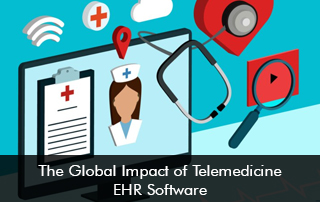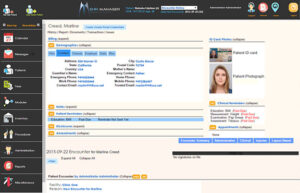With the convergence of digital innovation and medical care, telemedicine EHR software is revolutionizing healthcare delivery, accessibility, and efficiency on a global scale. From remote villages to bustling urban centers, this technology is bridging gaps, enhancing patient care, and reshaping the future of medicine.
Telemedicine EHR Software Bridging Geographic Barriers
One of the most significant impacts of telemedicine EHR software is its ability to transcend geographic barriers. In regions where access to healthcare is limited, telemedicine enables patients to connect with healthcare providers remotely. Whether it’s a rural community lacking nearby medical facilities or underserved areas in developing countries, telemedicine EHR software brings essential medical services to those who need them most.
Imagine a scenario where a patient living in a remote village experiences symptoms of a potentially serious illness. With traditional healthcare systems, seeking medical attention might involve long journeys and significant expenses. However, with telemedicine EHR software, the patient can consult with a specialist located miles away via video conferencing. Through secure electronic health records, the specialist has access to the patient’s medical history, enabling informed decisions and personalized care. This seamless integration of technology breaks down barriers to healthcare access, saving time, reducing costs, and potentially saving lives.
Enhancing Patient Care
Telemedicine EHR software not only improves access to healthcare but also enhances the quality of patient care. By centralizing patient information in digital records, healthcare providers can access comprehensive medical histories, test results, and treatment plans in real time. This access to up-to-date information empowers providers to make informed decisions, leading to more accurate diagnoses and personalized treatment strategies.
Furthermore, telemedicine EHR software facilitates collaboration among healthcare professionals, regardless of their physical locations. Specialists can consult with primary care physicians, share expertise, and coordinate care seamlessly through secure digital platforms. This multidisciplinary approach ensures that patients receive the best possible care, drawing on the collective knowledge and experience of healthcare teams.
Telemedicine EHR Software Improving Efficiency and Workflow
In addition to improving patient care, telemedicine EHR software streamlines administrative processes, leading to greater efficiency in healthcare delivery. Tasks such as appointment scheduling, prescription management, and billing are automated, reducing paperwork and minimizing errors. This efficiency allows healthcare providers to focus more time and attention on patient care rather than administrative tasks.
Moreover, telemedicine EHR software optimizes workflow by enabling virtual consultations and remote monitoring. Patients can schedule appointments online, eliminating the need for time-consuming office visits. Through telemonitoring devices, healthcare providers can remotely track vital signs, medication adherence, and disease progression, intervening proactively when necessary. This proactive approach not only improves patient outcomes but also reduces hospital readmissions and healthcare costs.
Democratizing Medical Education
Beyond clinical practice, telemedicine EHR software plays a vital role in medical education and training. Through virtual simulations and case studies, medical students and residents gain hands-on experience in diagnosing and treating patients in diverse clinical scenarios. Access to digital health records allows students to explore complex medical cases, understand disease patterns, and develop critical thinking skills.
Furthermore, telemedicine EHR software facilitates continuing medical education (CME) for healthcare professionals. Through online courses, webinars, and virtual conferences, providers stay updated on the latest medical advancements, evidence-based practices, and regulatory changes. This continuous learning ensures that healthcare professionals deliver high-quality care that aligns with current standards and guidelines.
Telemedicine EHR Software Addressing Challenges and Considerations
While telemedicine EHR software offers numerous benefits, its widespread adoption is not without challenges and considerations. Privacy and security concerns regarding patient data must be addressed through robust encryption, authentication, and compliance with healthcare regulations such as HIPAA (Health Insurance Portability and Accountability Act).
Moreover, disparities in access to technology and digital literacy present barriers to equitable healthcare delivery. Efforts to bridge the digital divide through infrastructure development, community outreach, and education are essential to ensure that all individuals can benefit from telemedicine EHR software.








